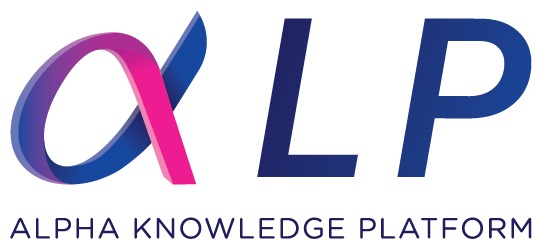TickerTape
Weekly Global Stablecoin & CBDC Update

This Week's Stories (So Far)
Hong Kong FinTech Week and StartmeupHK Festival join forces for a landmark 10th-anniversary edition, running from November 3–7, 2025 at the Hong Kong Convention & Exhibition Centre and multiple city venues. This powerhouse event brings together over 37,000 industry executives, 800+ influential speakers, and 700+ exhibitors from more than 100 economies, highlighting Hong Kong’s stature as a global financial and tech innovation hub.
The agenda spotlights emerging technologies. from AI and Web3 to digital assets and future banking, alongside year-round business matchmaking, startup funding opportunities, and keynote insight from global leaders like HSBC’s Georges Elhedery, Tencent’s Forest Lin, Binance’s Richard Teng, Nobel Laureate Geoffrey Hinton, and Solana Foundation’s Lily Liu. Special features include Samantha, the AI-powered networking host, and the Global Fast Track programme, fast-tracking scaleups across seven verticals.
Key Takeaways:
10th-anniversary collaboration: Unites fintech, startups, and global entrepreneurship for the largest FinTech event in Asia
Over 37,000 participants, 800+ speakers, 700+ exhibitors representing 100+ economies
Themed focus: AI, Web3, blockchain, digital finance, and global expansion for startups
Leading speakers: HSBC, Standard Chartered, Tencent, Ant Group, Solana, Binance, WEF, and more
Special programmes: AI-powered networking (Samantha), Global Fast Track, 100+ community events across the city
Emphasis on actionable insights, cross-border partnerships, and opportunities for startups, corporates, and investors
Canadian industry leaders are intensifying calls for the federal government to simplify stablecoin regulations ahead of the November 2, 2025 budget, warning that the absence of Canadian dollar-pegged stablecoins threatens national sovereignty and drives capital outflows to U.S. dollars. Tetra Digital Group CEO Didier Lavallée emphasized that “at a minimum, from a sovereignty perspective, Canadians should want a Canadian stablecoin.” Concerns have escalated since the U.S. passed GENIUS Act legislation this past summer establishing clear stablecoin rules. Without Canadian-dollar stablecoins, more capital flows into U.S. dollars and government bonds backing American stablecoins. Citigroup projects global stablecoin market growth from $200 billion in early 2025 to $1.9 trillion by 2030 in base case, or $4 trillion in bull case scenario.
Key Takeaways:
- Canadian industry urges simplified stablecoin rules ahead of November 2 budget to prevent capital outflows
- Absence of CAD-pegged stablecoins drives Canadian capital into USD and U.S. Treasury bonds
- U.S. GENIUS Act passage this summer heightened concerns about American stablecoin dominance
- Global stablecoin market projected to reach $1.9-4 trillion by 2030 from $200 billion early 2025
Why It Matters:
- Highlights national sovereignty concerns about USD-dominated stablecoin market beyond Canada
- Demonstrates how regulatory frameworks directly impact capital flows and monetary independence
- Could influence other middle-power economies facing similar stablecoin policy decisions
- Validates concerns that regulatory inaction enables foreign currency stablecoin dominance
Lloyds Banking Group’s Consumer Digital Index revealed on November 2, 2025, that 28 million UK adults (56% of the population) used artificial intelligence in the past 12 months to help manage money, making personal finance the nation’s number one AI use case. ChatGPT emerged as the most popular platform used by six in 10 AI users. More than half employ AI for budgeting, savings planning, or financial education, while 37% use it for investment research, 39% for future financial planning including pensions, and 26% for debt management strategies. Users estimate saving an average of £399 per year thanks to AI-generated insights, though 80% remain concerned about receiving inaccurate or outdated information.
Key Takeaways:
- 28 million UK adults (56% of population) used AI for money management in past 12 months
- ChatGPT dominates as platform with 60% usage among AI finance users
- Average user estimates £399 annual savings from AI-generated financial insights
- Personal finance surpasses health advice, shopping, travel planning as top AI application
Why It Matters:
- Demonstrates rapid mainstream adoption of AI for financial decision-making and planning
- Highlights trust concerns despite widespread usage, with 80% worried about inaccurate information
- Could accelerate development of AI-powered financial services from banks and fintechs
- Validates consumer demand for personalized financial guidance accessible through digital platforms
Hong Kong will host the Finternet 2025 – Asia Digital Finance Summit on November 4, 2025, at Grand Hyatt Hong Kong, organized by the Finternet Committee with support from OSL Group, Invest Hong Kong, Financial Services Development Council, and Cyberport. The summit, guided by “Bridge Ideas with Solutions” philosophy, will gather global regulators, international financial institutions, technology companies, and industry leaders. Featured discussions will focus on global regulatory coordination for digital assets, cross-border payment applications, and Real World Assets (RWA) and digital asset investment, aiming to transform cutting-edge ideas into practical solutions driving market progress.
Key Takeaways:
- Summit convenes November 4 at Grand Hyatt Hong Kong with global regulators and industry leaders
- Focus areas include digital asset regulatory coordination, cross-border payments, and RWA investment
- Event supported by major Hong Kong financial institutions and government agencies
- Aims to bridge conceptual frameworks with actionable solutions for digital finance industry growth
Why It Matters:
- Positions Hong Kong as leading Asian hub for digital finance innovation and regulatory dialogue
- Provides platform for coordinating regional approaches to digital asset regulation
- Could influence Asian digital finance policies through high-level stakeholder engagement
- Demonstrates Hong Kong’s strategic commitment to Web3 and digital asset ecosystem development
Four crypto ETFs launched during the first week of November 2025 using a procedural shortcut that allowed them to go live without active SEC approval, as the U.S. government shutdown froze SEC decision-making on pending applications. Two from Canary Capital, one from Bitwise, and one from Grayscale started trading after filing updated S-1 registration statements with “no delaying amendment” language that automatically become effective after 20 days unless the SEC intervenes. Fidelity and Canary Capital have now filed updated S-1 forms using the same method, potentially bringing new ETFs to market as early as November 13.
Key Takeaways:
- Four crypto ETFs launch early November using automatic effectiveness provisions during government shutdown
- S-1 filings with “no delaying amendment” language become effective after 20 days without SEC action
- Fidelity and Canary Capital file updated S-1s potentially launching new ETFs by November 13
- October’s expected approval wave derailed by government shutdown pausing SEC operations
Why It Matters:
- Demonstrates creative regulatory workarounds enabling market development during government paralysis
- Could accelerate crypto ETF proliferation through procedural routes bypassing traditional approval process
- Highlights vulnerabilities in regulatory framework when government operations are disrupted
- May establish precedent for future crypto product launches using automatic effectiveness provisions
Analysis published on November 3, 2025, examines how the global advancement of central bank digital currencies is fundamentally reshaping investment dynamics in precious metals markets. As 114 countries representing 98% of global GDP explore CBDC initiatives, the integration of programmable digital money with traditional commodity backing is creating new relationships between digital currencies and physical assets. CBDCs offering programmability and conditional spending capabilities are being evaluated for direct linkage to commodity reserves including gold and silver. The analysis highlights how CBDC technology enables real-time transparency of precious metal backing and enables new forms of commodity-backed digital money distinct from traditional fiat currencies.
Key Takeaways:
- CBDC adoption globally reshapes precious metals market dynamics and investment strategies
- CBDCs enable programmable links to commodity reserves including gold and silver backing
- Real-time transparency of physical asset backing distinguishes commodity-backed CBDCs from fiat systems
- Integration of digital currency technology with traditional commodity markets creates new asset class relationships
Why It Matters:
- Demonstrates potential for CBDCs to bridge traditional and digital financial systems through commodity backing
- Could accelerate precious metals adoption as alternative backing for digital currencies beyond fiat reserves
- Highlights emerging strategies for differentiating national CBDCs through unique backing mechanisms
- Validates commodity-backed digital currency model as legitimate alternative to fiat CBDCs
Tether International announced that its net profit for the first nine months of 2025 has exceeded $10 billion, validated by independent accounting firm BDO. This achievement underscores Tether’s robust financial position despite global economic challenges. The stablecoin giant’s total reserves now surpass $181.2 billion, with approximately $135 billion held in U.S. Treasury bonds. USDT continues to dominate the stablecoin market with over 60% market share and serves more than 500 million users globally. Over $17 billion in USDT was minted in Q3 alone, reflecting sustained demand across global markets. CEO Paolo Ardoino noted that the profits are driven by increased user trust in USDT and growing demand for stablecoins as financial inclusion mechanisms.
Key Takeaways:
- Tether’s Q1-Q3 2025 combined profit exceeds $10 billion, approaching Goldman Sachs’ annual net revenue
- USDT total supply surpassed $174 billion, maintaining 60%+ stablecoin market dominance
- Reserves strengthened by $135 billion in U.S. Treasuries and 13% portfolio allocation to gold and Bitcoin
- USDT reaches 500 million active users globally, signaling mass adoption
- Tether plans to launch USAT, a U.S.-compliant stablecoin, in December 2025
Why It Matters:
- Demonstrates exceptional profitability of stablecoin operations amid volatile global markets
- Tether’s Treasury holdings now rival nation-states, indicating institutional confidence
- USDT’s dominance positions it as the primary liquidity bridge in digital finance
- Upcoming USAT launch signals adaptation to new U.S. regulatory frameworks
- Sets precedent for stablecoin profitability and sustainability as viable financial products
Ripio, a Latin American cryptocurrency exchange with over 25 million users, launched wARS, a stablecoin pegged to the Argentine peso, now live on Ethereum, Coinbase’s Base, and World Chain. The token enables users to send and receive funds globally without relying on banks or converting to U.S. dollars, directly addressing Argentina’s persistent inflation and currency control challenges. Argentina’s inflation has declined from 292% in April 2024 to 31.8% under President Javier Milei’s administration, creating favorable conditions for alternative monetary instruments. Ripio intends to launch similar stablecoins for other Latin American currencies, facilitating regional cross-border transactions without expensive intermediaries or USD conversion requirements. The launch follows Ripio’s earlier release of a tokenized sovereign bond, contributing to the broader movement toward bringing real-world assets onto blockchain rails.
Key Takeaways:
- wARS enables borderless peso payments without banks or mandatory USD intermediation
- 25 million Ripio users gain access to peso stablecoin via Ethereum, Base, and World Chain
- Regional expansion planned for similar stablecoins in other Latin American currencies
- Responds to persistent inflation and strict currency controls driving local demand for stable value storage
- Complements tokenized RWAs strategy, bridging local currencies and blockchain finance
Why It Matters:
- Demonstrates stablecoin utility in emerging markets where traditional monetary systems are unstable
- Ripio’s multi-chain deployment reflects ecosystem fragmentation but increases accessibility
- Regional stablecoin suite could reduce dependency on U.S. dollar-denominated tokens
- Sets precedent for local currency stablecoins addressing hyperinflation and capital controls
- Signals broader adoption of blockchain-based financial services in underbanked regions
Innovative Payment Solutions, Inc. (ticker: IPSI) announced the launch of its next-generation Crypto Payment Platform, designed to enable seamless cryptocurrency transactions for online gaming, iGaming, and sportsbook operators. The platform processes Bitcoin, Ethereum, USDC, and other major cryptocurrencies with real-time settlement and automatic fiat conversion. The system features built-in anti-fraud and KYC/AML compliance tools, with API integration enabling operators to embed crypto payments directly into checkout flows, gaming wallets, and mobile applications. Customers benefit from faster deposits, withdrawals, and reward mechanisms while maintaining full regulatory compliance. The platform bridges traditional e-commerce with decentralized finance, combining instant wallet-based transactions, multi-currency support, and payments-first UX design tailored for regulated online gaming sectors.
Key Takeaways:
- Supports Bitcoin, Ethereum, USDC, and major cryptocurrencies with real-time processing
- Automatic conversion to fiat currencies with built-in KYC/AML and anti-fraud compliance
- API suite enables seamless integration into existing IPSI merchant services and custom checkout flows
- Targets high-margin online gaming, iGaming, and sportsbook sectors
- Combines DeFi transaction speed with TradFi regulatory compliance infrastructure
Why It Matters:
- Demonstrates commercial adoption of stablecoin and crypto payments in regulated industries
- Real-time settlement reduces settlement risk compared to traditional banking rails
- Compliant infrastructure addresses regulatory barriers to crypto merchant adoption
- Expands stablecoin utility beyond cryptocurrency traders to mainstream commerce operators
- Signals broader integration of digital assets into vertical-specific payment solutions
Banco Inter and Chainlink successfully executed real-time cross-border CBDC settlement between Brazil and Hong Kong on November 3, 2025, marking a significant milestone in practical wholesale CBDC applications. The transaction demonstrated instantaneous settlement capabilities using Brazil’s digital real and Hong Kong’s digital currency infrastructure with Chainlink’s cross-chain oracle technology enabling seamless interoperability. This pilot represents one of the most advanced international CBDC implementations, validating technological viability for near-instantaneous cross-border financial transactions without traditional correspondent banking delays.
Key Takeaways:
- Banco Inter and Chainlink execute real-time CBDC settlement between Brazil and Hong Kong November 3
- Cross-border transaction settles instantly using digital real and HK digital currency infrastructure
- Chainlink oracles enable seamless interoperability between distinct CBDC systems
- Demonstrates practical viability of wholesale CBDC applications for international payments
Why It Matters:
- Validates CBDC technology as solution for expensive, slow cross-border payments through traditional systems
- Demonstrates cross-chain interoperability as critical infrastructure for multi-CBDC world
- Could accelerate central bank adoption of real-time settlement systems
- Positions blockchain oracles as foundational infrastructure for international CBDC coordination
The Bank of Korea and People’s Bank of China renewed their bilateral currency swap agreement for an additional five years on November 3, 2025, maintaining the $50 billion limit for direct won-yuan exchange between the two central banks. The renewal represents continuation of the largest currency swap arrangement both countries maintain, strengthening regional financial cooperation and reducing reliance on U.S. dollar intermediation for Korean-Chinese trade. The agreement facilitates direct won-yuan settlements, supporting bilateral commerce while potentially enhancing leverage for future digital currency coordination between Asia’s two largest economies.
Key Takeaways:
- Korea-China renew $50 billion currency swap agreement for five more years November 3
- Arrangement remains largest for both central banks demonstrating commitment to bilateral cooperation
- Facilitates direct won-yuan settlements reducing dependence on dollar intermediation
- Provides foundation for potential future digital currency coordination
Why It Matters:
- Strengthens regional financial cooperation independent of U.S. financial system
- Could facilitate future CBDC coordination between Korea and China
- Demonstrates Asian economies’ continued efforts to reduce dollar dependence
- May influence other Asian currency arrangements and de-dollarization strategies
Analysis published on November 3, 2025, highlights emerging regulatory concerns about stablecoin risks despite the GENIUS Act’s passage establishing U.S. regulatory framework. The report emphasizes that while the Act provides clarity on reserve asset requirements and issuer licensing, systemic vulnerabilities remain in cross-border stablecoin operations, multi-issuer structures, and integration with traditional financial systems. Regulatory experts warn that rapid stablecoin adoption could outpace enforcement capabilities, creating gaps where risks accumulate before regulators can implement comprehensive oversight.
Key Takeaways:
- Regulatory analysis identifies stablecoin risks remaining despite GENIUS Act passage
- Concerns focus on cross-border operations, multi-issuer structures, and system integration
- Rapid adoption risks outpacing regulatory enforcement and oversight capabilities
- Report emphasizes need for comprehensive international coordination on stablecoin standards
Why It Matters:
- Signals potential for stricter future regulations despite recent clarity from GENIUS Act
- Highlights regulatory challenges in governing borderless digital currency systems
- Could influence central bank approaches to stablecoin restriction or requirement for CBDC alternatives
- Demonstrates ongoing tension between innovation enablement and financial stability
The Hong Kong Monetary Authority unveiled its “Fintech 2030” forward-looking strategy on November 3, 2025, during Hong Kong FinTech Week, charting the next decade of fintech development with a comprehensive “DART” framework covering four strategic pillars. HKMA CEO Eddie Yue emphasized Hong Kong’s commitment to becoming a “robust, resilient, and future-ready fintech hub” through over 40 strategic initiatives. The strategy focuses on Digital economy, Asset tokenization, Resilience, and Talent development, representing a systematic approach to positioning Hong Kong as Asia’s premier fintech center in the 2026-2030 period.
Key Takeaways:
- HKMA unveils “Fintech 2030” strategy during Hong Kong FinTech Week November 3
- “DART” framework focuses on Digital economy, Asset tokenization, Resilience, and Talent development
- Portfolio includes over 40 strategic initiatives across four core pillars
- Strategy aims to position Hong Kong as robust, resilient, future-ready fintech hub
Why It Matters:
- Demonstrates Hong Kong’s systematic long-term commitment to fintech leadership
- Asset tokenization pillar signals continued prioritization of blockchain infrastructure development
- Could establish Hong Kong as model for other financial centers developing fintech strategies
- Positions e-HKD, stablecoins, and tokenized assets as core to Hong Kong’s fintech vision
Nasdaq-listed biotech firm Tharimmune announced on November 2, 2025, that it raised approximately $540 million in a private placement led by DRW and Liberty City Ventures to pursue a digital asset treasury strategy centered on canton coin (CC). The company becomes the first publicly traded firm directly supported by the Canton Foundation, which governs the Canton Network institutional blockchain. Investors include major crypto firms ARK Invest, Polychain Capital, Kraken, alongside traditional finance players like Goldman Sachs, DTCC, BNP Paribas, Tradeweb, and Broadridge, validating canton coin as infrastructure for institutional digital finance.
Key Takeaways:
- Tharimmune raises $540 million for canton coin treasury strategy November 2
- Becomes first public company directly supported by Canton Foundation
- Investors include major crypto firms and traditional financial institutions
- Canton Network reportedly processes 500,000+ daily transactions with major financial institution backing
Why It Matters:
- Demonstrates institutional acceptance of canton coin as legitimate blockchain infrastructure asset
- Validates digital asset treasuries as viable corporate strategy beyond crypto-native companies
- Positions Canton Network as serious competitor to Ethereum for institutional finance applications
- Could accelerate other companies’ adoption of digital asset treasury strategies
Powered by






